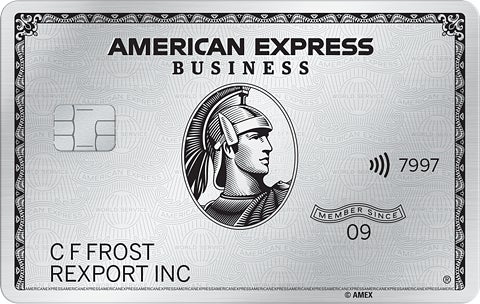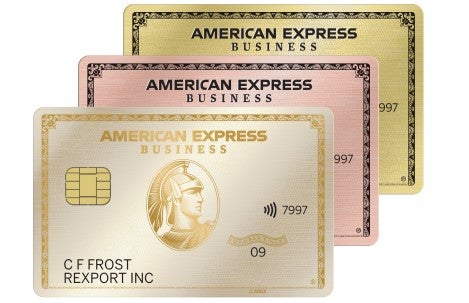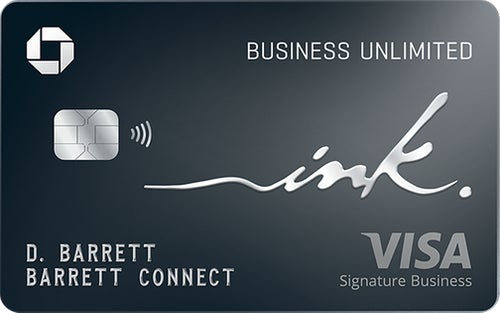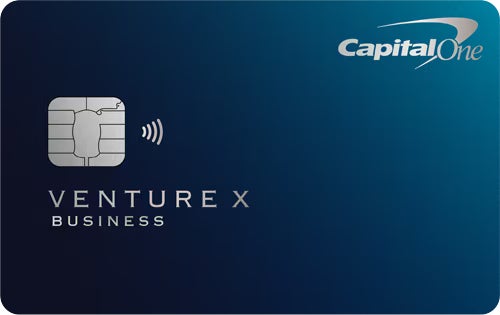| Business Rating: | 4.9 / 5 |
| Rewards value: | 5.0 |
| APR: | 1.0 |
| Reward flexibility: | 4.0 |
| Features: | 5.0 |
In a Nutshell:
The Capital One Venture X Business card offers the same big value for a modest annual fee like the personal card, while upping the ante with a huge welcome offer.
Rewards rate:
|  |
Sign-up bonus:
|  |
APR:
|  |
Rewards flexibility:
|  |
Annual fee:
|  |
Other Notable Features: Capital One and Priority Pass™ lounge access (after enrollment), up to $120 in statement credits for TSA PreCheck® or Global Entry application fee, no foreign transaction fee (See Rates and Fees), anniversary bonus miles, annual travel credit
Like the Capital One Venture X, the Capital One Venture X Business card is a dream when it comes to low-effort and high-value perks and rewards. In fact, it’s nearly identical to the personal card, right down to the spending categories, travel statement credits and annual bonus miles.
One place where this card stands apart from its sibling card — as well as from other business cards — is the high sign-up bonus. With the higher-than-average spend required to earn the bonus, this offer is decidedly built for businesses with significant expenses. The Venture X Business also has no preset spending limit, which is a notable departure from the personal card.
Since the card otherwise shares so much in common with the Venture X, we recommend it for many of the same reasons: it’s a fantastic value for the modest annual fee and much simpler to use than other luxury business cards. If you’re a business owner who values flexibility and simplicity without sacrificing perks and features, the Venture X Business should be on your radar. But if your business needs to carry a balance, you’ll want to check out the other best business cards on the market.
What are the pros and cons?
Pros
- You can easily offset the annual fee each year with the annual travel credit and account anniversary bonus.
- Luxury perks further extend its value, including statement credit for expedited airport prescreening, Priority Pass™ lounge access and access to the Premier Collection line of resorts and hotels.
- Few business cards offer such a generous sign-up bonus.
Cons
- The required spend for the welcome offer might be too steep for some businesses.
- Only travel redemptions are worthwhile. Non-travel redemption options are valued at less than 1 cent per point on average.
- The Venture X Business has no preset spending limit, which means you can’t carry a balance.
Why you might want the Capital One Venture X Business card
If you’re a business with employees who travel often, the Venture X Business is an ideal low-effort way to earn rewards while providing extra luxury to your jetsetters.
Like the personal card, the Venture X Business makes it easy to offset the card’s annual cost. It also comes with the versatile Capital One rewards program that gives you redemption flexibility that rivals competing rewards programs.
Earn generous rewards on nearly all categories
Like other luxury business travel cards on the market, the Venture X Business earns its highest rewards on travel purchases. You’ll earn 10X miles on hotels and rental cars booked through Capital One’s travel booking site and 5X miles on flights and vacation rentals booked the same way.
Along with these bonus rewards, you earn 2X miles on all other purchases. Few luxury business travel cards offer a 2X base rate, with most earning just 1.5X. This rate is on par with the top-earning flat-rate cash back cards, which don’t offer additional bonus categories like the Venture X Business.
With these rates, you can easily rack up miles as a frequent flyer. Suppose you take 10 round-trip flights per year at an average cost of around $400, for a total of $4,000 in spending on airfare through Capital One’s travel booking site. You’d earn a solid 20,000 miles. If you also make another $2,000 in purchases on hotels and rental cars through Capital One and $1,200 per month on everything else, you’d earn another 48,000 miles per year, giving you a total of 68,800 miles, worth $688 when redeemed for travel.
When compared to other cards like the Business Platinum Card® from American Express, you should come out ahead based on similar spending and a 1-cent-per-point value.
| Card | Rewards calculation | Total estimated value |
|---|---|---|
| Venture X Business | $4,000 airfare spending (5X miles) + $2,000 hotel bookings (10X) through Capital One’s travel booking site + $14,400 general purchases (2X) – $395 annual fee (See Rates and Fees) = | $293 in travel |
| Amex Business Platinum | $4,000 airfare bookings + $2,000 hotel bookings with Amex Travel (5X) + $14,400 general purchases (1X) – $695 annual fee = | -$451 |
The Venture X Business handily pulls ahead with its strong earning rates, though this difference is less if you don’t often spend on hotels. Still, the greater rate on general purchases means you stand to earn more miles on a greater variety of purchases compared to the Amex Business Platinum card.
Annual credits and bonuses offset the annual fee
One of the other main advantages of the Venture X Business compared to competing business luxury cards is the relatively low price of the card for the long-term value it offers. At $395 annually (See Rates and Fees), the card clocks in well under the cost of cards like the Amex Business Platinum. And at this price point, the card’s annual travel credits and bonus miles help pay for the cards.
Here’s the skinny: You’ll earn 10,000 bonus miles each year on your account anniversary. These miles are worth $100 when you use them to make purchases through Capital One’s travel booking site or pay off travel purchases made outside Capital One’s travel portal. The card also offers $300 annual credit for bookings made through Capital One’s travel booking site.
So if you or your employees spend $400 per year on travel — a figure most businesses that need to travel are likely to reach — you’re entirely offsetting the annual cost of the Venture X Business. Any rewards earned after that are icing on the cake.
Valuable perks for you and your employees
On top of the card’s annual credits, there are a few other perks and features that can extend the card’s value. You can open additional employee cards for free (See Rates and Fees) with the Venture X Business, and all employee cards earn rewards at the same rate as the primary account. You can also monitor and manage transactions with several software integrations.
You also get several travel perks common to travel business cards, including an up to $120 statement credit for Global Entry or TSA PreCheck, access to a network of 1,300+ lounges worldwide, including Capital One lounges and Priority Pass lounges. The Priority Pass membership can prove especially valuable as the prestige membership price runs $469 annually.
However, whether or not you find this perk useful depends on which airlines you frequent: you’ll find a majority of Priority Pass lounges at international airports. However, you’ll also get unlimited access to the Capital One Lounge.
Flexible travel redemptions
The Venture X Business bucks the trend of many other business travel cards by allowing you to redeem rewards for purchases outside the issuer travel portal at full value. So if you prefer booking your flights with an airline directly, you can still take advantage of your hard-earned miles without sacrificing their worth. This is an advantage you can’t find on many business travel cards.
Capital One also offers a decent mix of travel partners to international airlines. Depending on the value of the transfer partner’s miles or points, this could increase the value of your earned rewards. Such transfers are always a valuable perk, though domestic airlines are lacking on the partner list.
Generous sign-up bonus
Throughout its history, the Venture X Business card has boasted one of the best sign-up bonuses you can get on a business travel — but that bonus is now even more valuable.
You can earn 150,000 bonus miles as a new cardholder — if you spend $30,000 in your first three months. This is a bit of step down compared to the card’s previous offer, which was already generous at up to 350,000 bonus miles: 150,000 miles once you spend $30,000 in the first 3 months, and an additional 200,000 miles once you spend $200,000 in the first 6 months.
Based on Bankrate’s latest point valuations, Capital One miles are worth 1.7 cents each on average, giving this bonus a potential value of around $2,550. This easily tops the bonus value you’ll find on many of the card’s closest competitors.
| Card | Welcome bonus | Total estimated value |
|---|---|---|
| Venture X Business | Up to 150,000 miles (150,000 miles with $30,000 spend in first 3 months) | $2,550 |
| Amex Business Platinum | 150,000 points if you spend $20,000 in the first three months. Plus, earn a $500 statement credit after spending $2,500 on qualifying flights booked directly with airlines or through American Express Travel in the first three months of card membership. You can earn one or both of these offers. Offer ends 6/30/25 | $3,500 (based on Bankrate’s point valuation) |
| Chase Ink Business Premier® | $1,000 cash back if you spend $10,000 in the first three months | $1,000 |
Why you might want a different card
While the Venture X Business has a lot to offer thanks to its valuable bonuses and terrific rewards rate on both travel and general purchases, not all businesses may find the card an ideal fit.
If your business is smaller or you don’t travel often, you may be better off with a business rewards card that earns more on specialized categories.
Limited non-travel perks
If your business doesn’t do much in the way of travel, the Venture X Business doesn’t have much to offer you when it comes to perks. While this makes sense, some of the best luxury business cards — the Amex Business Platinum card for example — are stuffed with additional features not directly related to travel, such as Indeed credits or statement credits toward wireless telephone service.
Sign-up bonus may prove out of reach for some businesses
Though the Venture X Business card carries a spectacular bonus offer, it requires a ton of spending ($30,000 in your first three months to earn the first 150,000 miles). This may prove out of reach for many small-business owners. In contrast, the Chase Ink Business Premier only requires $10,000 in spending within the first three months for its $1,000 sign-up bonus.
Balance must be paid in full
Unlike the Venture X and other traditional credit cards, the Venture X Business is similar to a charge card since it has no preset spending limit. This means that your business will need to pay off all purchases made on the card account at the end of each month.
This isn’t always a huge deal — it’s a credit card best practice to pay your balance in full at the end of each statement period. But this could prove a dealbreaker for businesses that need to carry a balance for a specific reason, such as investing in business improvements.
As you might expect from a charge card, the Venture X Business also lacks a 0 percent intro APR on balance transfers and new purchases (See Rates and Fees). If your business needs to consolidate some debt with a lower interest rate or finance any large purchases, then you’ll need to look at other business card options.
How does the Venture X Business compare to other travel rewards cards?
The Venture X Business hits the ground running and is easily among the top choices for your business for business travel cards. However, depending on your business’s spending needs and redemption preferences, you might find another card a better fit.
 |  |  | |
|---|---|---|---|
Rewards rate
| Rewards rate
| Rewards rate
| |
Welcome bonus
| Welcome bonus
| Welcome bonus | |
Annual fee $695 | Annual fee $375 | Annual fee $0 | |
Other things to know
| Other things to know
| Other things to know
|
Venture X Business vs. Amex Business Platinum
The Amex Business Platinum card has a well-deserved reputation for luxury perks unmatched by other business cards on the market. With those luxury perks comes a much larger annual fee. But unlike the Venture X Business, the Amex Business Platinum Card’s annual travel credits don’t entirely offset the card’s annual fee.
Amex Business cardholders will have to be much more proactive about taking advantage of the card’s other statement credits — many of which aren’t directly travel-related — if they want to break even on the card’s cost. For business owners who like to actively engage in the rewards and features of a card to squeeze out every bit of value, the Amex Business Platinum is worth considering. The Venture X Business, on the other hand, requires much less oversight to maximize value and is ideal for businesses with a hands-off approach to earning miles.
A major advantage of the Venture X Business over the Amex Business Platinum is that it earns a higher rate on general purchases. Depending on your spending needs, you might just rack up more rewards with the Venture X Business over time. But with Bankrate’s latest point valuations placing both Capital One and Amex rewards miles/points at around 2 cents each, the largest deciding factor for your business may come down to how much you value the additional statement credits on the Amex Business Platinum as well as each issuer’s travel partners.
Venture X Business vs. American Express Business Gold Card
The Amex Business Gold card trades in some of the luxury perks of its sibling card for additional rewards flexibility and a lower annual fee. So the Amex Business Gold shares with the Venture X Business simplicity and ease-of-use.
The Amex Business Gold card is also angled more towards general business purchases than travel. Businesses can earn 4X points on two categories based on their highest spend each month from six eligible categories, including: U.S. advertising, U.S. gas station purchases, U.S. restaurants, U.S. Electronics and wireless services and transit. This rate applies on up to $150,000 in combined bonus category spending annually (1X points thereafter). Only the top two categories each billing cycle will count towards the $150,000 cap.
The Amex Business Gold’s major tradeoff for the lower annual fee is the relative lack of additional features. Unlike the Venture X Business, the Amex Business Gold offers no annual statement credits to help offset the cost of the card. There’s also no airport lounge access or similar perks to pile on the value. If travel is a major part of your business spending, the Venture X Business might still be the more efficient — and valuable — pick.
Venture X Business vs. Chase Ink Business Unlimited
If tracking annual fees, rewards programs and cardholder perks makes your head spin, the Chase Ink Business Unlimited strips down the complexity and gets to the basics. It earns 1.5 percent cash back on all purchases, compared to Venture X Business’s 2X miles. It also has a much lower sign-up bonus at $750 after $6,000 in spend in the first three months of account opening.
These are weaker numbers than the Venture X Business, but in exchange, there’s no annual fee to worry about and the sign-up bonus might be easier to attain. Like the Venture X Business, the Ink Business Unlimited also offers free employee credit cards, which you won’t find on Amex’s offerings.
Just bear in mind that the Ink Business Unlimited isn’t designed for travel and features a 3 percent foreign transaction fee, unlike the other cards in our comparisons.
How to use the Venture X Business card
- Take advantage of the free employee cards (See Rates and Fees) to dole out additional cards where needed.
- Spend $30,000 within the first three months to earn the generous sign-up bonus.
- Make sure you or your employees spend at least $300 per year on travel booked through Capital One’s travel booking site to use the card’s annual travel credit.
- Sign up for Priority Pass membership
- Use the included TSA Precheck and Global Entry credits.
- Book travel through Capital One’s travel booking site whenever possible to maximize your mile earnings.
- Use the card on your general spending if you don’t have a card that earns more.
- Transfer your earned miles to partnered travel programs to potentially boost the value of those miles.
Is the Capital One Venture X Business card right for you?
If you or your employees require frequent travel and you’re interested in earning some rewards on those business trips — and add a little luxury to the mix — the Venture X Business is one of the top business travel cards on the market.
The card’s remarkably generous annual credits easily cover the annual fee so long as you’re traveling, and no other business travel card on the market can match the Venture X Business’s reward rate on general purchases — nor the size of its welcome offer. But if travel doesn’t factor much into your business needs, the best business card for you might be another option.
For Capital One products listed on this page, some of the benefits may be provided by Visa® or Mastercard® and may vary by product. See the respective Guide to Benefits for details, as terms and exclusions apply.
Upon enrollment, accessible through the Capital One website or mobile app, eligible cardholders will remain at upgraded status level through December 31, 2024. Please note, enrolling through the normal Hertz Gold Plus Rewards enrollment process (e.g. at Hertz.com) will not automatically detect a cardholder as being eligible for the program and cardholders will not be automatically upgraded to the applicable status tier. Additional terms apply.
All reviews are prepared by CreditCards.com staff. Opinions expressed therein are solely those of the reviewer and have not been reviewed or approved by any advertiser. The information, including card rates and fees, presented in the review is accurate as of the date of the review. Check the data at the top of this page and the bank’s website for the most current information.
Responses to comments in the discussion section below are not provided, reviewed, approved, endorsed or commissioned by our financial partners. It is not our partner’s responsibility to ensure all posts or questions are answered.
Partner Offer
